Wonderful Introduction:
A quiet path will always arouse a relaxed yearning in twists and turns; a huge wave, the thrilling sound can be even more stacked when the tide rises and falls; a story, only with regrets and sorrows can bring about a heart-wrenching desolation; a life, where the ups and downs show the stunning heroism.
Hello everyone, today XM Foreign Exchange will bring you "[XM Foreign Exchange Platform]: The United States' non-agricultural data in May is expected to slow down, and the short-term trend analysis of spot gold, silver, crude oil and foreign exchange on June 6th". Hope it will be helpful to you! The original content is as follows:
The three major futures indexes rose, Dow futures rose 0.37%, S&P 500 futures rose 0.39%, and Nasdaq futures rose 0.34%. European stocks rose and fell mixed, with the UK's FTSE 100 rising 0.04%, the German DAX fell 0.06%, and the French CAC40 rising 0.08%.
⑴ The number of non-agricultural employment in the United States is expected to increase by 130,000 in May, lower than the 177,000 increase in April. ⑵ The U.S. Bureau of Labor Statistics will release its employment report at 20:30 Beijing time. ⑶The report may affect the market's expectations of the Federal Reserve's interest rate cut in July, and in turn affect the trend of the US dollar. ⑷ Non-agricultural data is one of the most important economic data in the United States, and the market is concerned about whether it shows that the labor market is healthy enough to allow the Fed to continue to maintain interest rates. ⑸ Economists expect the unemployment rate to remain unchanged at 4.2% in May, with an average hourly wage rising 3.7% year-on-year, a slight slowdown from 3.8% in March and April. ⑹TD Securities analysts expect non-farm employment growth to fall to its three-month lowest level in May, with employment growth in the www.stofoco.commodity, government, and leisure and hospitality industries likely to slow down, with hourly wages rising by 0.3% month-on-month.
⑴Switzerland has been included in the monitoring list of the semi-annual foreign exchange policy report by the US Treasury since 2023. ⑵This move is for the Swiss francThe impact is relatively limited and is expected to continue this state. ⑶ The Swiss National Bank denies the exchange rate manipulation after being included in the watch list (full report). ⑷ This should not be seen as a positive factor for the Swiss franc, as it may become a potential barrier to the Swiss National Bank's exchange rate intervention. ⑸ Even when Switzerland was labeled as a "exchange rate manipulator" by the United States in December 2020, the Swiss franc still fell. ⑹ Currently, the risk of the Swiss National Bank re-implementing negative interest rates is a drag on the Swiss franc. ⑺The euro and Swiss francs remain fluctuated in the recent range, but the risk tends to be at the upper end of the range.
⑴ U.S. stock funds have experienced capital outflows for the third consecutive week of the week ended June 4, as investors are concerned about uncertainty in U.S. trade policy and are cautious before Friday’s key employment reports are released. ⑵ Meanwhile, European stock funds were driven by strong demand for the eighth consecutive week, as the ECB cut interest rates as expected on Thursday as weak inflation data and market expectations of the ECB rate cut. ⑶ According to LSEGLipper data, investors withdrew $7.42 billion from U.S. stock funds that week, while investing $2.72 billion in European funds. ⑷ Asian funds also attracted a www.stofoco.com inflow of US$1.84 billion. ⑸ Investors also purchased US$667 million in industry funds, achieving www.stofoco.com inflows for the second consecutive week. ⑹ Among them, the technology and industrial sectors flowed in US$909 million and US$878 million, respectively, while the financial and medical sectors flowed out nearly US$800 million, respectively. ⑺ Global bond funds achieved www.stofoco.com inflows for the seventh consecutive week, reaching US$16.17 billion. ⑻ Investors invested $4.66 billion in USD-denominated short- and medium-term bond funds, the largest single-week www.stofoco.com purchase since April 2024, and high-yield bond funds also attracted $2.93 billion inflows.
⑴ The U.S. Treasury market performed smoothly before the May employment report, although signs of weak labor market triggered uneasiness in the market. ⑵ Yesterday's closing and overnight period, the 10-year Treasury bond yield briefly exceeded 4.40%. It was previously recommended to cover the shorts at 4.34% or lower (the low of 4.32% on the day). ⑶ It is currently recommended to sell when the market strengthens, as it faces significant risks from supply ($119 billion in 3-year, 10-year and 30-year Treasury bond refinancing) and CPI (May data may push up prices due to tariffs). ⑷ Traders' "whispering numbers" for employment data in May are lower than the 130,000 economists' forecast. If the data is less than expected, it will support us in selling strong strategies to prepare for supply and CPI. ⑸ The Financial Times pointed out that investors' boycotts have risen, and the economic side effects of sovereign debt accumulation are more worrying than the possibility of a collapse in the government bond market. ⑹In terms of trading strategies, it is recommended to cover the shorts when the 10-year Treasury bond yield reaches 4.40%, and the yield is expected to befluctuates between 4.42% and 4.35%. ⑺The schedule on Friday is lighter, but the most important event is the employment report released by the U.S. Bureau of Labor Statistics at 8:30. The Fed's consumer credit report was released at 15:00, which is less impactful in www.stofoco.comparison, and there were no speech arrangements for Fed officials that day. ⑻ Employment data is expected to be lower than the level in the past few months, with non-farm employment expected to increase by 130,000 (of which the private sector increases by 120,000), unemployment rate expected to remain at 4.2%, average hourly wages are expected to rebound to 0.3%, and weekly working hours are expected to remain at 34.3 hours. ⑼ Recent weak ADP reports and economic Beige Book may have affected some forecasters’ expectations, and although job opening data are better than expected, the labor market as a whole is still greatly affected by trade, immigration and fiscal policy uncertainty, and many businesses have postponed or canceled their recruitment plans.
⑴Eurozone retail sales increased slightly in April, with growth in food and automobile fuel sales partially offsetting the decline in non-food product sales, according to the European Statistics Office on Friday report. ⑵ Monthly growth in retail sales slowed to 0.1% from 0.4% in March, lower than economists' expectations of 0.2%. ⑶ Food, beverage and tobacco sales increased by 0.5%, higher than 0.1% in March; automobile fuel sales increased by 1.3%, higher than 0.6% in March. ⑷ Non-food product sales fell by 0.3%, reversing the 0.5% growth in March. ⑸ From an annual perspective, retail sales growth accelerated from 1.9% in March to 2.3%, higher than expected 1.4%. ⑹EU retail sales increased by 0.7% month-on-month in April, and annual growth reached 2.8%.
⑴Eurozone bond yields fell before the release of key U.S. employment data on Friday, after a sharp rise the day after the European Central Bank suggested that it might be near the end of the interest rate cut cycle. ⑵ The ECB cut deposit rates by 25 basis points to 2% as expected on Thursday, but Governor Lagarde said the central bank was in a "good position", suggesting a possible suspension of the easing cycle. ⑶ German two-year bond yield fell 3 basis points to 1.845%, up 8.5 basis points on Thursday, the largest single-day gain in a month. ⑷ Lyn Graham-Taylor, senior interest rate strategist at Labo Bank, pointed out that market participants may think Thursday's trend was a bit overdoing. ⑸ Germany's 10-year bond yield fell by 5 basis points to 2.539%, and the spread of the euro zone benchmark yield was 68.80 basis points, close to the narrowest level since April 4. ⑹Money market traders are currently expected to cut interest rates by 24 basis points by the end of the year, with a chance of a rate cut in July of 18%, down from 30% before Lagarde’s press conference. ⑺The ECB also lowered its inflation and growth forecast, saying that trade conflicts are still affecting the global economy. ⑻ European Central Bank official Stonalas said that if the European economy is further weakened, the central bank may cut interest rates again, but it is not expected at present. ⑼The market will pay close attention to the United StatesEmployment data, weak economic data this week has sparked concerns about a decline in employment data, which could intensify concerns about stagflation and put pressure on the Fed to ease policy as soon as possible.
⑴ The central bank of India (RBI) unexpectedly cut interest rates by 50 basis points to 5.50% on June 6 to support slowing urban household consumption. Reuters' rapid survey of economists showed that the central bank expects to keep interest rates unchanged at least until the end of the fiscal year. ⑵ Although India's economy grew 7.4% in the last quarter, overall demand remained weak, especially in urban areas, where household consumption was limited by stagnant wages. ⑶ As inflation is within the www.stofoco.comfort range of the RMB's mid-term target of 4.0%, the market generally expects the central bank to cut interest rates, but only two economists predict a 50 basis point cut. ⑷ The central bank also shifted its policy stance from "loose" to "neutral", indicating that it will first evaluate the impact of previous interest rate cuts on bank loan interest rates and demand recovery. ⑸ Except for the two, 44 economists all expected the central bank to maintain a 5.50% repurchase rate in their next meeting in August, with most predicting interest rates to remain unchanged before the end of the fiscal year. ⑹Debopam Chaudhuri, chief economist at Piramal Group, said that the rate cut is "pre-oriented" and mainly considers the domestic economic situation and aims to create safe space for domestic growth. ⑺He pointed out that the central bank will adopt a "wait and see" strategy to evaluate the effect of interest rate cuts on restoring domestic demand, and then decide whether to further relax policies. ⑻The rate cut of only 100 basis points this time may be the shortest and shallowest rate cut cycle in more than a decade. ⑼Taurus MutualFund managing director R.K. Gupta said weak demand, decline in industrial production, sluggish manufacturing, and poor corporate profits all pose challenges to the central bank. ⑽He expects the central bank may no longer cut interest rates before the end of the fiscal year, but further cuts may still be possible in the future if the economic situation does not improve.
⑴ On June 6, the Russian Central Bank announced that it would lower the key interest rate by 1 percentage point to 20%, saying that economic growth is cooling down and inflation is slowing down. ⑵ The central bank said in its statement: "The current inflationary pressure, including potential inflationary pressure, is still declining. The Russian economy is gradually returning to the equilibrium growth track." ⑶ Russia's economic growth rate fell to 1.5% year-on-year in the first quarter of 2025, www.stofoco.compared with 4.3% in 2024. ⑷ In May 2025, the annualized inflation rate fell from the peak of 10.34% in March to less than 10%, and the consumer price increase from 3.39% year-on-year, lower than 3.88% in the same period last year. ⑸ The central bank expects inflation to be 7% to 8% this year, and economic growth rate is 1% to 2%, while the Ministry of Economic Affairs predicts economic growth rate to be 2.5%. ⑹The ruble has appreciated about 40% against the US dollar since the beginning of the year, helping the central bank to curb inflation and make imported goods cheaper. ⑺The appreciation of the ruble is partly due to Trump's recommendationThe efforts to activate the negotiations between Russia and Ukraine, but analysts believe that if the negotiations do not make any breakthroughs, the ruble may face downward pressure. ⑻The tightening monetary policy has a significant effect on the decline in prices of non-food www.stofoco.commodities, especially through the appreciation of the ruble. ⑼The household inflation expectations rose for the second consecutive month in May, reaching the level when interest rates were raised in October last year. ⑽Food inflation pressure is still high, and the prices of staple foods such as potatoes tripled due to poor harvests last year, seriously affecting the low-income groups. ⑾The tightening monetary policy makes it difficult for many Russian www.stofoco.companies to obtain loans and financing, which in turn affects investment. ⑿The central bank responded that its research showed that corporate profits in most industries were sufficient to support investment, and even in fragile industries such as construction, it would not cause systemic risks.
⑴U.S. official employment data is expected to affect the next trend of the US dollar, because it may change the market's expectations for the Fed's monetary policy. ⑵ It is estimated that the number of new jobs in the United States in May was 130,000, down from 171,000 in April; the unemployment rate is expected to remain at 4.2%. ⑶ Average hourly wage data (a key indicator for measuring wage growth) is expected to grow by 3.7% year-on-year, lower than 3.8% in April; month-on-month growth is expected to be 0.3%, higher than the previous 0.2%. ⑷ This week, traders increased their bets on the Fed's July rate cut as ADP employment data and the May ISM Purchasing Managers Index (PMI) show weak labor demand and lower economic activity. ⑸ According to the CME Federal Reserve observation tool, the probability of the Federal Reserve cutting interest rates at its July meeting rose from 22.5% a week ago to 32.8%. ⑹ However, Fed officials still supported a wait-and-see attitude towards interest rates in public speeches, referring to the upward risks of Trump's tariff rhetoric to inflation and the resilience of labor demand. ⑺Federal Director Coogler said Thursday at the New York Economic Club that inflation poses greater upside risks, while jobs and output growth may face downside risks. She believes that the labor market is "resilient and stable" and that economic activity is still growing, but the growth rate is lower than in the second half of 2024.
Euro/USD: As of 20:26 Beijing time, the euro/USD fell and is now at 1.1413, a drop of 0.27%. Before New York City, (Euro-USD) fell in the last intraday trading, rebounding lower after the resistance at 1.1490 reached our morning target, trying to get positive momentum that could help break through that resistance to get rid of the (RSI) overbought situation.
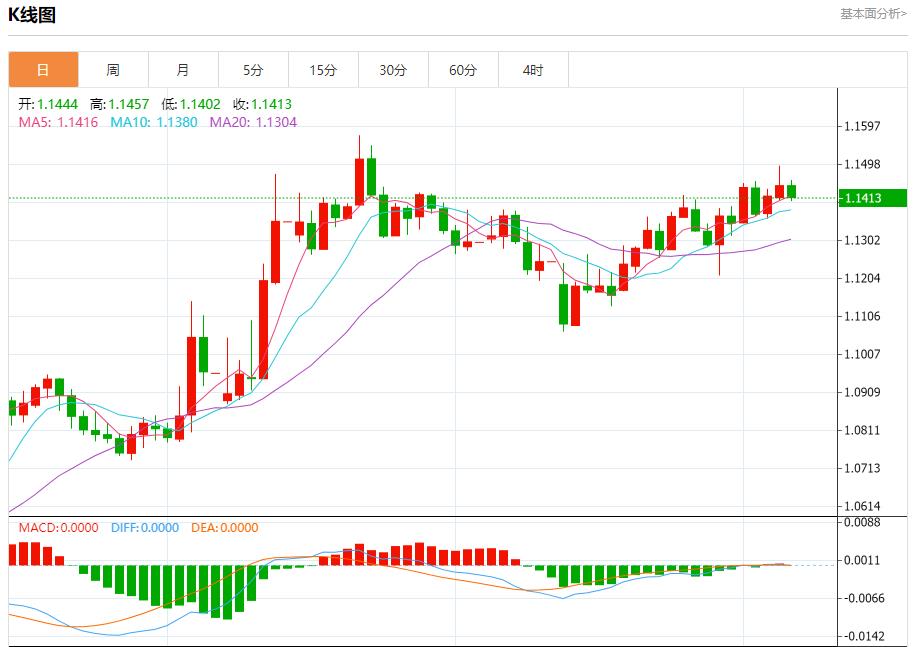
GBP/USD: As of 20:26 Beijing time, GBP/USD fell and is now at 1.3544, a drop of 0.20%. Before New York, GBPUSD price fell on the last trading day as key resistance stabilized at 1.3585, trying to gain positive results that could help break through that resistanceand attempt to get rid of its apparent overbought conditions on (RSI), especially as the main bullish trend dominates and the negative signals of trading along a small slash on a short-term basis continue to gain positive support from its trading above the EMA50.
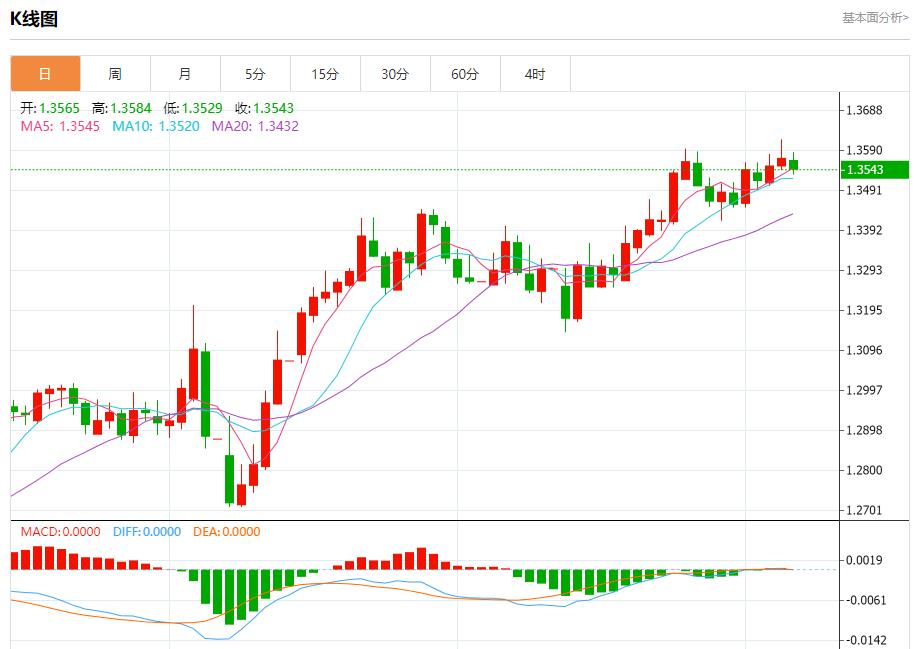
Spot gold: As of 20:26 Beijing time, spot gold rose, now at 3356.69, an increase of 0.12%. Before New York, the (gold) price fell to a low in the last intraday trading after temporarily breaking through the key resistance of $3,365 before losing momentum and returning to a downward position again, which was affected by negative signals that (RSI) appear after reaching overbought levels.
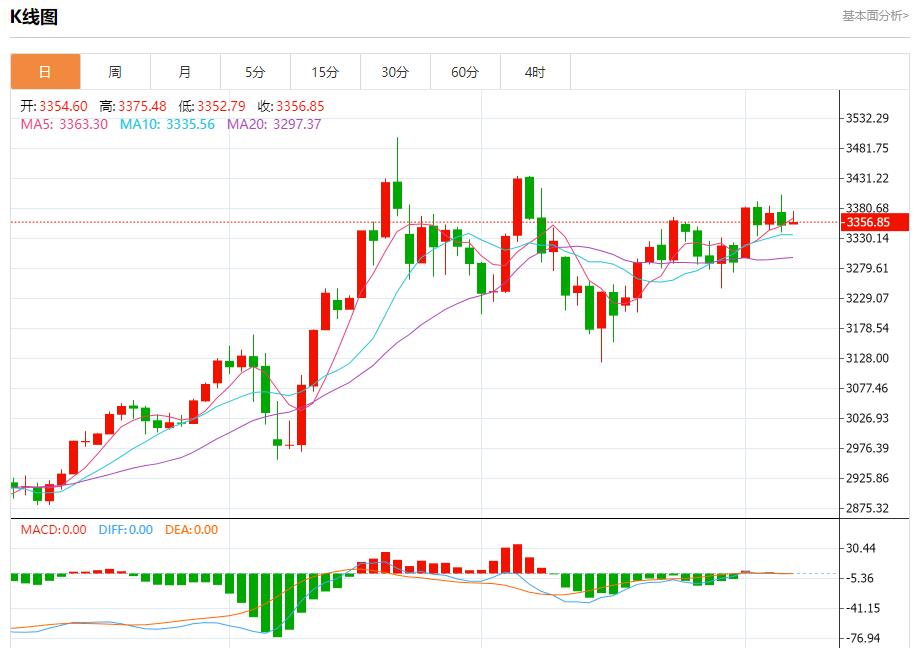
Spot silver: As of 20:26 Beijing time, spot silver rose, now at 36.131, an increase of 1.43%. Before the New York Stock Exchange, the (silver) price continued to rise on the last trading day, supported by its continuous trading above the EMA50 and dominated by the main bullish trend on a short-term basis and trading along a slash, and positive signals appeared on the (RSI), despite reaching overbought levels, indicating that buying power is fully dominant in price.
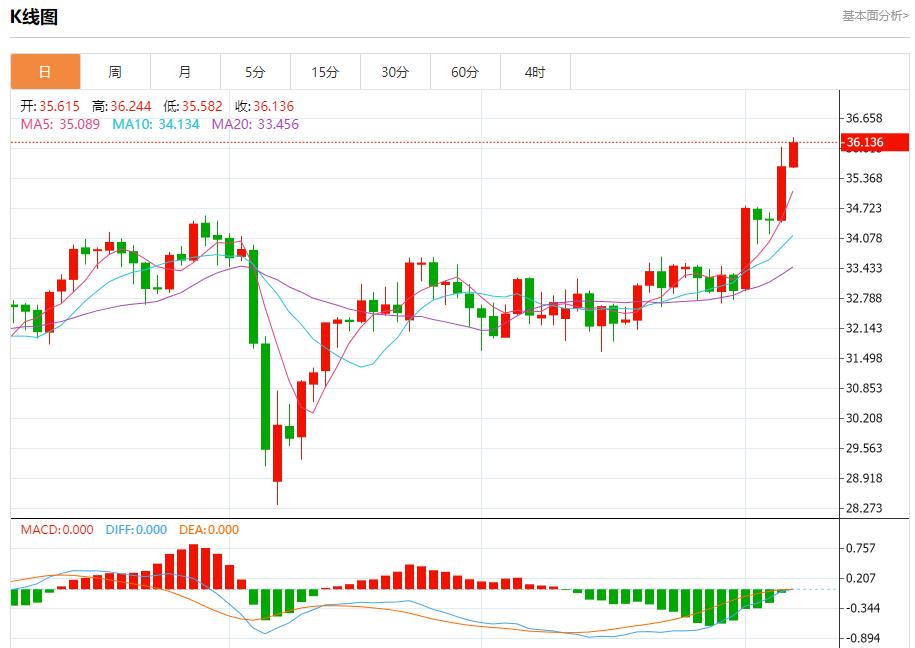
Crude oil market: As of 20:26 Beijing time, U.S. oil fell and is now at 63.300, a drop of 0.08%. Before New York, (crude oil) fell on the last trading day, a correction move aimed at taking a breath before returning to the rise and trying to get the desired positive momentum to attack the stubborn key resistance of $63.50.
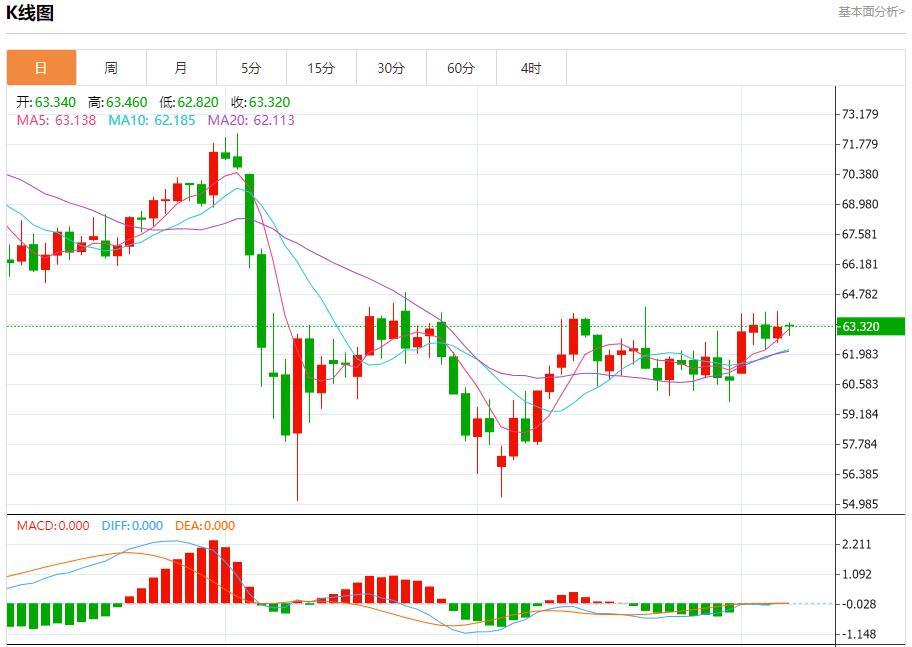
HSBC Research said that OPEC+ is expected to agree to two significant increase in production in August and September at its next meeting. It is expected that OPEC+ will increase daily production by 41,000 barrels and 274,000 barrels respectively during this period. "Our new expectation is that assuming regular production increases from October to December, the voluntary production cut of 2.2 million barrels per day will be www.stofoco.completely lifted by the end of 2025." Bank analysts said that if OPEC chooses to continue to accelerate production growth after the summer, it will confirm its intention to crack down on overcapacity and regain market share from US shale oil producers.
The above content is about "[XM Forex Platform]: US non-agricultural data for MaySlow down, the entire content of the short-term trend analysis of spot gold, silver, crude oil and foreign exchange on June 6" was carefully www.stofoco.compiled and edited by the editor of XM Forex. I hope it will be helpful to your trading! Thank you for your support!
Every successful person has a start. Only by being brave enough to start can you find the way to success. Read the next article quickly!